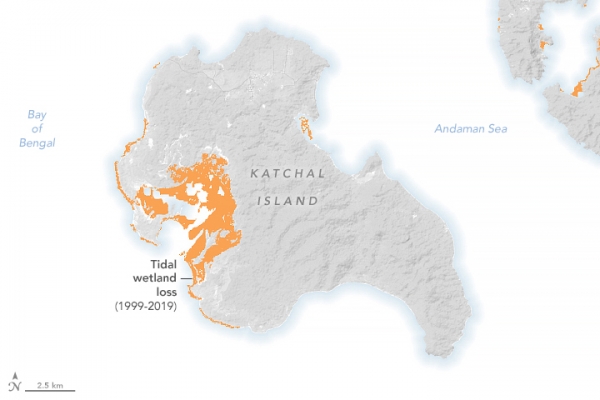Tidal wetlands can change rapidly. A new study of tidal wetlands around the world found that 4,000 square kilometers (1,500 square miles) of these ecologically important areas were lost between 1999 and 2019. The researchers examined three types of tidal wetlands using Landsat data: tidal flats, marshes, and mangroves. They found that mangroves had the highest ratio of loss to gain, with an estimated net decrease of 3,700 square kilometers (1,400 square miles).
However, tidal wetlands are affected by a number of different processes, and despite an overall net loss globally, the team found that wetlands had expanded in some places.
The largest changes occurred in river deltas, where sediment supply can change rapidly. This can be due to factors like deforestation and erosion upstream that help build new wetlands downstream, or dams that hold sediment back and cause wetlands to shrink. “Our data suggests a net loss of tidal wetlands on deltas globally, though gains of 2,100 square kilometers (810 square miles) alongside losses of 2,300 square kilometers (890 square miles) indicate the considerable dynamism of these systems," wrote study lead Nicholas Murray, an ecologist at James Cook University in Australia, and colleagues in Science.
Continue reading at NASA Earth Observatory
Image via NASA Earth Observatory


